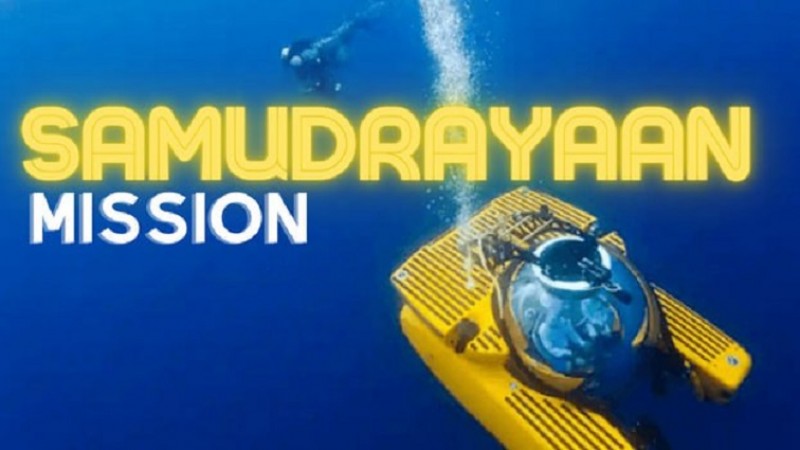
Following the triumphant missions of Chandrayaan-3 to the moon and Aditya L1's exploration of solar phenomena, India is now setting its sights on a groundbreaking deep-sea expedition. Under the ambitious banner of the Samudrayaan mission, India is poised to launch a pioneering voyage, sending three crew members into the abyss aboard a self-propelled human-occupied vessel (HOV) christened as the Matsya-6000. This daring journey will plunge to a remarkable depth of six kilometers beneath the ocean's surface and is scheduled for the year 2026.
On September 11th, Kiren Rijiju, India's Minister of Earth Sciences, took to Twitter to provide insights into the Samudrayaan Project's objectives. He emphasized that the Matsya-6000 HOV would play a pivotal role in bolstering India's burgeoning blue economy while preserving the delicate balance of the ocean ecosystem. Beyond its ecological significance, this mission is poised to usher in a new era of clean energy endeavors.
The Samudrayaan mission is being spearheaded by the National Institute of Ocean Technology (NIOT) based in Chennai. It comprises two integral components: an autonomous underwater vehicle (AUV) known as the Ocean Mineral Explorer (OMe 6000) and a crewed submersible vessel named the Matsyan 6000. These HOVs will empower human explorers to physically investigate the vast seabed territories that have been sanctioned by the International Seabed Authority (ISA). India's aspiration to join this exclusive club places it in the company of other nations such as China, France, Japan, Russia, and the United States.
Beneath the ocean's depths, trillions of small, rock-like formations known as polymetallic nodules are scattered across the seafloor. These nodules hold within them precious metals crucial for the production of electric vehicle (EV) batteries, including cobalt, copper, and nickel. These metals are vital for the proliferation of electric vehicles, making them a prized commodity. However, the ability to extract these resources from the seafloor is a technological challenge, setting off a race for deep-sea mining (DSM). Notably, countries lagging behind have a glimmer of hope, as the ISA has not yet formalized the rules, regulations, and processes (RRPs) for exploitation.
Seabed mining represents a promising avenue for India's transition toward clean energy, aligning with its commitments under the Paris Agreement and its Nationally Determined Contributions. The question arises: Why deploy human-occupied vessels (HOVs) when remotely operated vehicles (ROVs) could seemingly accomplish the task?
India has entered into contractual agreements with the ISA, one for polymetallic nodules (PMN) exploration in 2002 and another for polymetallic sulphides (PMS) in 2017. The estimated potential of polymetallic nodules is a staggering 380 million tonnes, harboring approximately 4.7 million tons of nickel, 4.29 million tons of copper, 0.55 million tons of cobalt, and a substantial 92.59 million tons of manganese. However, India's voyage towards harnessing clean energy through DSM is fraught with a myriad of technical, economic, and environmental challenges.
The Indian Ocean's polymetallic nodules contain a tantalizing 0.21 percent concentration of cobalt, a concentration nearly 100 times richer than ore deposits found on continental crusts. Fortunately, India can draw inspiration from Hindustan Zinc Ltd, a company based in Udaipur, which has demonstrated the capacity to extract copper, nickel, and cobalt from 180 tons of PMNs annually. This development offers the potential to significantly offset India's cobalt imports, which stood at 250 kg last year.
Yet, the extraction of manganese and lithium from PMNs and PMSs remains an unsolved puzzle for Indian industries. The Institute of Minerals and Materials Technology (IMMT) in Bhubaneswar, entrusted with pioneering indigenous technologies, holds the key to unlocking this critical aspect of India's clean energy quest. Hopes are high for a groundbreaking breakthrough in the near future.